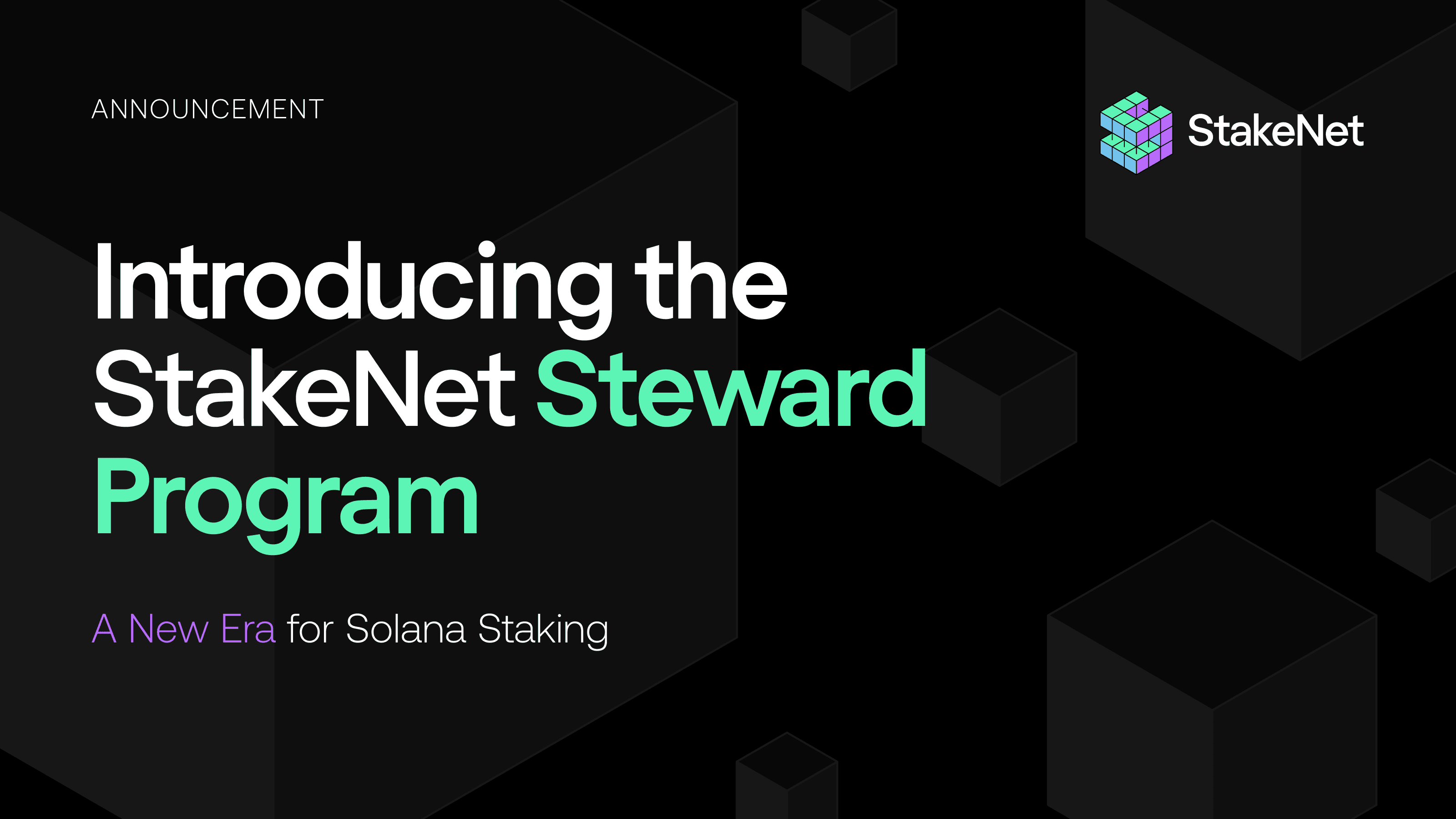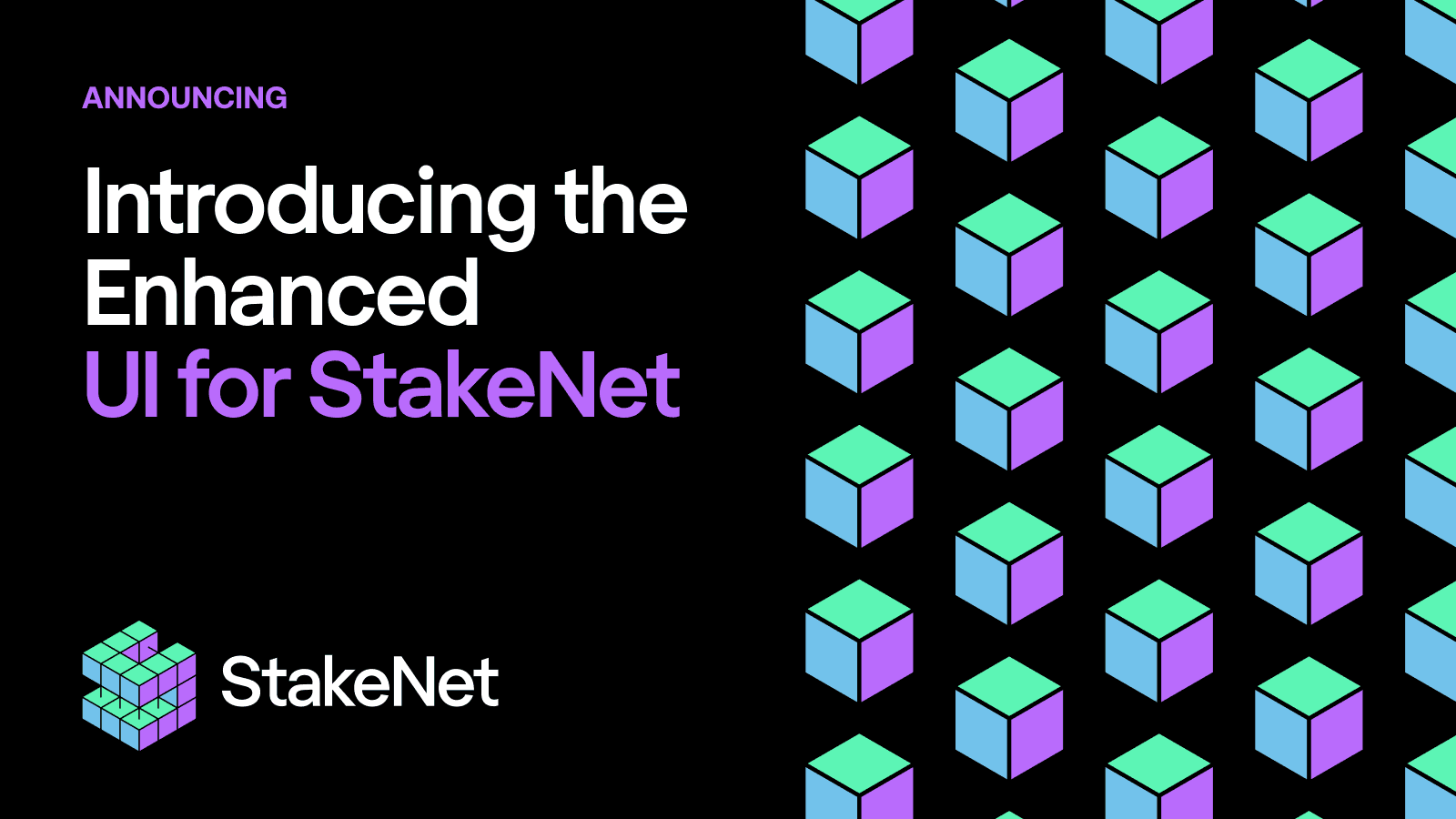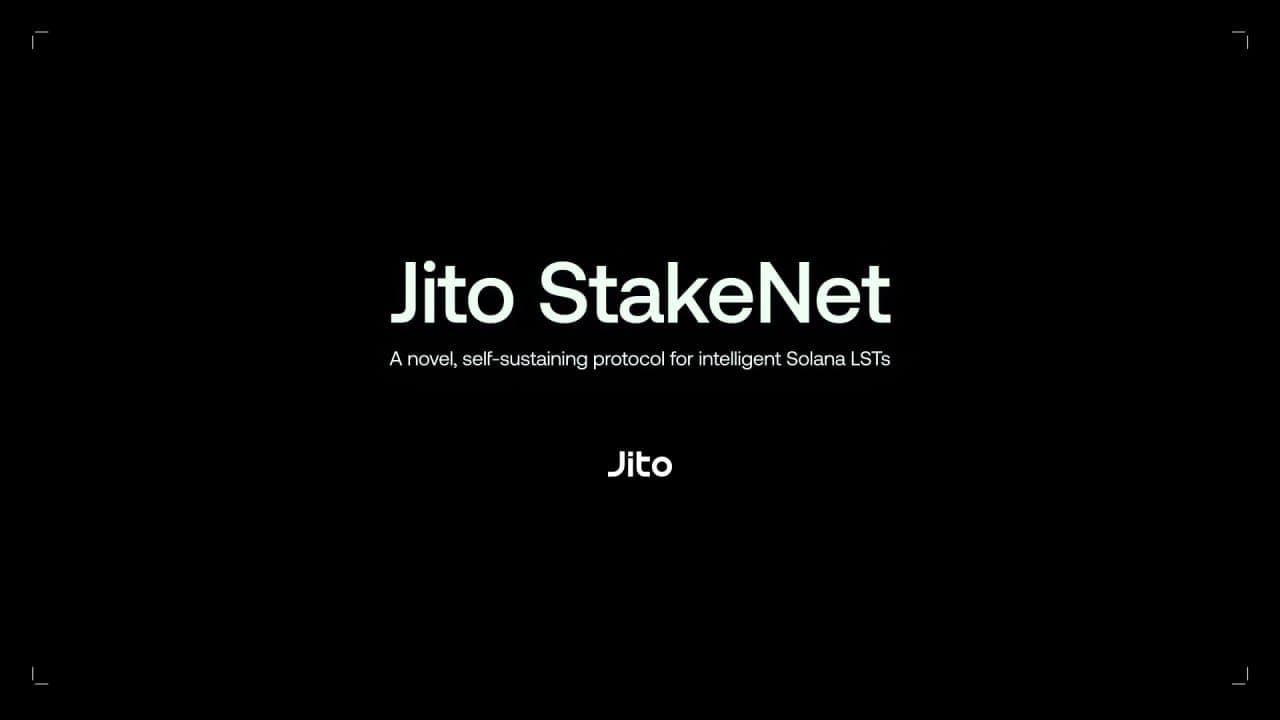A Deep-Dive Into StakeNet
3 minute reading time

Before we delve into the specifics of StakeNet, we invite our readers to catch up with our initial blog post detailing the motivation behind the product.
StakeNet: A Network Of Keepers And On-Chain Programs

At its core, StakeNet is a network of keepers and on-chain programs. Its two primary components are:
Validator History Program: This program can store three years (512 epochs) of history for every validator on the network. By providing a transparent and cryptographically verified record of past actions, it becomes possible both for users and on-chain programs to make informed decisions about validator behavior.
Steward Program: Leveraging the on-chain validator history and other on-chain information, the steward computes scores and stake delegation amounts for each validator. A set of keepers coordinate running a state machine to ensure stake is delegated to the best performing validators. This autonomous system can run forever and enables a more transparent and efficient mechanism for delegating stakes based on validated historical data.
As such, the stake pool operations are permissionless and can be run with anyone with a small amount of SOL tokens for executing transactions. Let’s get into the details of how the on-chain scoring and stake delegation work.
On-Chain Validator Scoring
The data used by StakeNet for validator scoring (recorded starting September 6, 2023) is fully on-chain and currently includes:
- Vote Credits: These serve as a quantitative measure of a validator's participation and correctness in the consensus process.
- Commission: This refers to the fees charged by validators for their services, impacting the rewards that stakeholders receive.
- MEV Commission: Maximum Extractable Value (MEV) commission are the additional earnings validators obtain from efficient MEV extraction.
- Validator Version and Client Type: These details provide insights into the software reliability and the operational status of a validator, which are key indicators of their performance.
- Total Stake and Stake Rank: The total stake delegated to a validator is stored, along with its rank relative to all validators, for identifying which validators are above the halt line of superminority validators.

All this data comes from two sources: (a) on-chain accounts and (b) gossip data. Using on-chain vote accounts as a source ensures that every piece of data comes with its proof of authenticity, a digital seal that shows it hasn't been changed or corrupted. Gossip data is what nodes on the Solana blockchain use to talk to each other and share updates. It’s a reliable stream of information that tells us what’s happening in real-time and makes StakeNet a most reliable and secure protocol. While we are starting with only the above data set, the goal is to keep expanding what is being recorded and in the future include geographical location, validator skip rates and more.
On-Chain Stake Movement
Stake pool management typically involves a hot wallet that is under the control of the team managing the protocol. This central point of control carries inherent risks, as it holds the power to move any amount of stake to a single validator — a power that could be exploited if the wallet were ever compromised. Recognizing this vulnerability, StakeNet introduces an innovative shift: the transition of hot wallet authority to an on-chain steward program. The hot wallet authority, called the "Staker" in spl-stake-pool terminology, is moved to a PDA (Program Derived Address) owned by the Steward. This means that the only stake movement operations that can occur are those computed with the on-chain inputs and scoring algorithm.
This transition not only enhances security by making it impossible for malicious actors to control the wallet through external means but also automates the process. The Steward Program operates as an intelligent state machine, designed to reward validators that perform well and penalize those that don't, aligning incentives with the health of the network.

StakeNet As A Platform
The primary immediate objective is to establish JitoSOL as the pioneering stake pool that uses StakeNet for its operations in a permissionless way. However, with growing interest from other top Solana stake pools, we would aim to collaborate with the community to transform it into a versatile platform.
We will continue to keep you updated on all the StakeNet developments via our blog.
Related Articles

Introducing the StakeNet Steward Program: A New Era for Solana Staking
4 minute reading time

Introducing the Enhanced UI for StakeNet
2 minute reading time

Announcing the Release of StakeNet's Validator History Repository and Visualization UI
1 minute reading time
